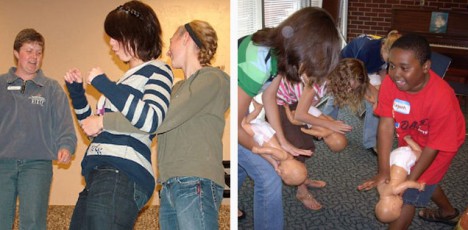Did You Know?!
In a 2011, a US National Safety Council report stated that choking caused 4,500 deaths (amongst all ages) in the United States in 2009.[Ref:46]
Most cases of choking do not cause complete airway obstruction and therefore do not require the Heimlich maneuver.
As long as a choking victim can cough, talk and breath in and out (even if the breathing is a little noisy), it is not necessary to intervene immediately.
However it is very important to go right away to the nearest hospital Emergency Room, to make sure that nothing remains lodged in the airway or swallowing passage.
The MOST important thing to know about the Heimlich maneuver is WHEN to perform it.
The Heimlich maneuver is ONLY indicated if there is COMPLETE obstruction of the airway (the choking victim is unable to cough, talk or breathe and is turning purple or blue).
The next thing to know is HOW to perform the Heimlich maneuver. To be safe, please take a life-saving (or baby-sitting) course, where you can practice the most up-to-date techniques on mannequins.
To find such a course, we suggest you do Google search on “St. John’s Ambulance” or the “Red Cross”.
Knowing how to perform variations of the Heimlich maneuver (for grown-ups, children and babies) will decrease the likelihood of breaking ribs or rupturing someone’s liver or spleen.
The Heimlich maneuver is currently overused. With good intentions, it is often used when a choking victim can still talk and / or cough (but may be red in the face).

In a 2011, a US National Safety Council report stated that choking caused 4,500 deaths (amongst all ages) in the United States in 2009.[Ref:46]